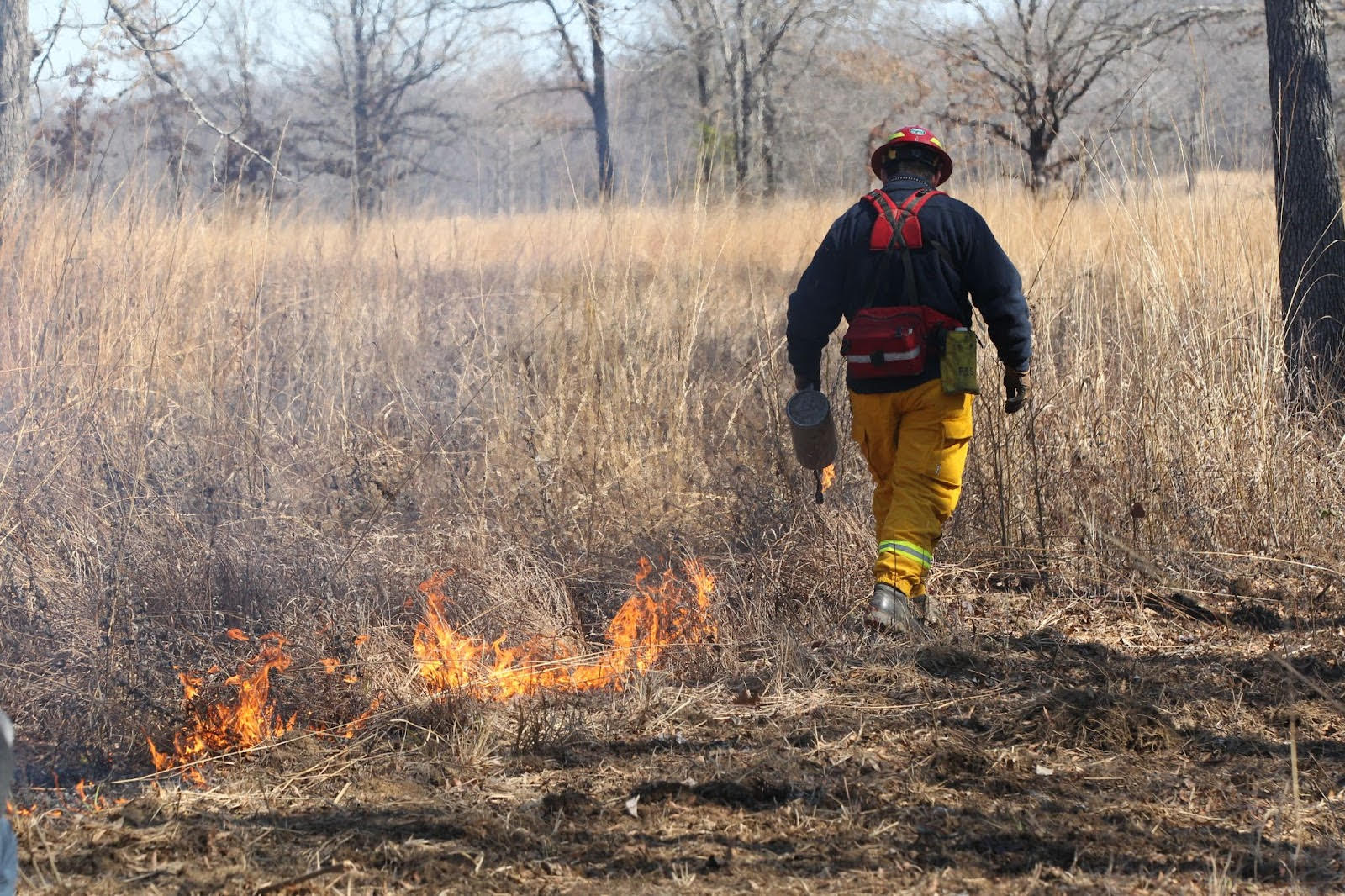Late holiday gift delivery bolsters Lake Pickthorne fish habitat
BY Jim Harris
ON 02-01-2023
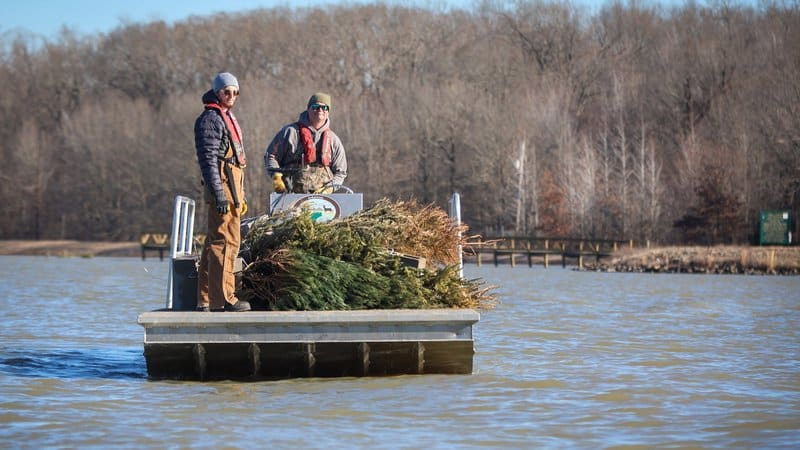
Feb. 1, 2023
Jim Harris
Managing Editor Arkansas Wildlife Magazine
JACKSONVILLE – The many folks who left live Christmas trees at the North Little Rock Riverview Park boat access after the holiday season may not realize it, but they’ve provided a big help to the habitat at Tommy L. Sproles Lake Pickthorne.
Arkansas Game and Fish Commission fisheries staff from multiple locations, led by Brinkley fisheries biologists Justin Homan and Micah Tindall, took the 150 trees left in North Little Rock and 60 more trees dropped off at Pickthorne to create fish attractor sites throughout the lake last Friday. Trees were tied to concrete blocks, and the AGFC’s Matt Schroeder and Ethan Dodson from the Mayflower office, Courtney Smith from the Brinkley office, and staffers Josh Melton from the Russellville office worked from two pontoon boats specially outfitted as habitat barges to deliver the trees to specific sites mapped for anglers on the AGFC’s fish attractor site at www.agfc.com/fishattractors.
Fishing the 347-acre Lake Pickthorne, which is about 5 feet deep over most of the lake with a 15- to 17-foot channel near the east shoreline, doesn’t require having a boat, Homan noted. Almost a mile of drivable levee is available around portions of the lake, and anglers can fish from shore, or from a pier at the AGFC’s Tommy L. Sproles Access on the west side and from another pier on the east side.
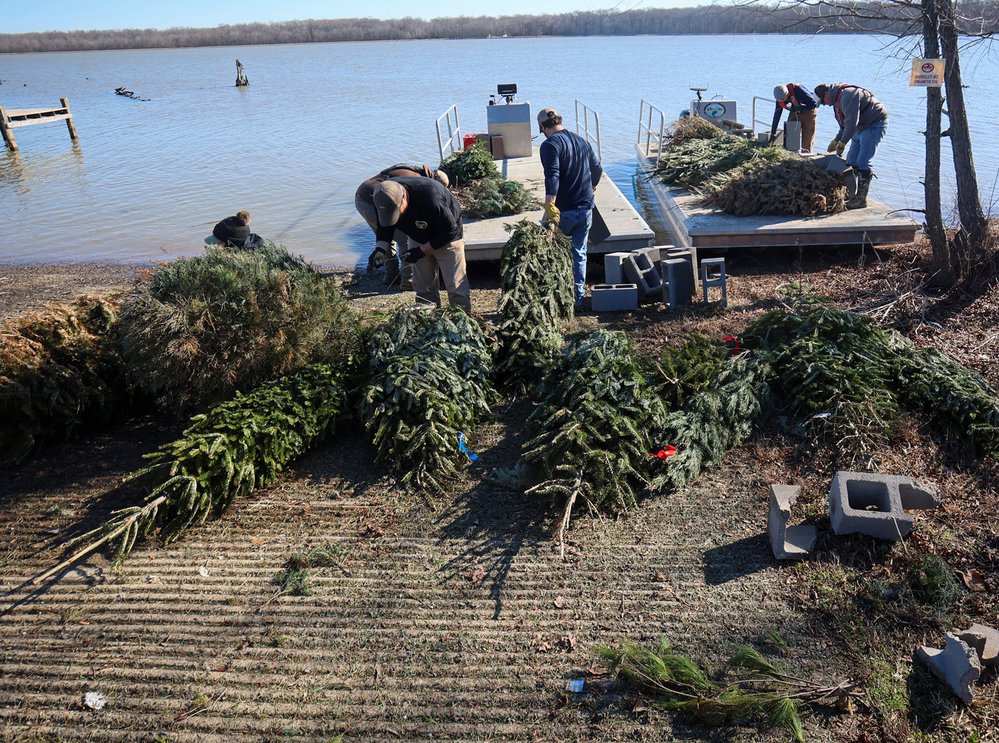
“This is a very popular bank fishing lake,” Homan said. ”That’s why most of our sites we put out are casting distance of those levees because that’s where people like to fish.”
Smaller habitat projects such as this one are left to the AGFC’s districts around the state, according to Sean Lusk, AGFC fisheries management staff biologist. “Usually we’ll have five or six Christmas trees at some of our drop-off sites, and it provides a lot of benefit for people to make their own secret brush piles. But if you can get several hundred trees like this, a project like this makes sense. The Brinkley district organized it and asked around (the fisheries division) for extra help.
“It’s definitely beneficial for habitat, but the thing about Christmas trees is they don’t typically last very long. Pickthorne’s situation was pretty unique in that they had a couple hundred trees.”
The AGFC made 43 sites available for tree dropoff after the holidays. The idea first is to let anglers take the trees they want for their own habitat building at their favorite spot, Homan said, but when there are so many leftovers like at North Little Rock, it allows the district to tackle a higher priority project like improving habitat at Pickthorne.
“I talked to a guy the other day who asked if he could take some over and put them out at (Lake) Conway. I said, Yeah, that’s what they’re for.’”
Rebuilding habitat on Pickthorne has included planting water willow, Homan said. The AGFC has used side-scan sonar to map the bottom of the lake, which is mostly stumps and little else, he said.
“Christmas trees are so readily available,” Homan said. “They’re going to last in the lake maybe two or three years, not very long, but it’s better than nothing, and it’s free. All we have to do is buy block, and we get seconds from ABC Block and Brick. They can’t use them because they’re not structurally sound (for building) so they give us a discount on them.”
Pickthorne, built by the AGFC in 1990 and renovated in 2000, is noted for having bream, crappie, black bass and channel catfish.
“It’s been stocked with saugeye but we quit stocking with saugeye,” Homan said. ”The crappie population was overcrowded and so the saugeye were stocked for about five or six years. We didn’t see a decline in the numbers of crappie, didn’t see an improvement in the size of crappie, so we quit stocking the saugeye.
“And we switched from Florida strain largemouth to northern strain. We’ve been stocking (northern largemouth) annually for about four or five years, trying to get as many bass back in the lake as we can. There’s just a general lack of predators.”
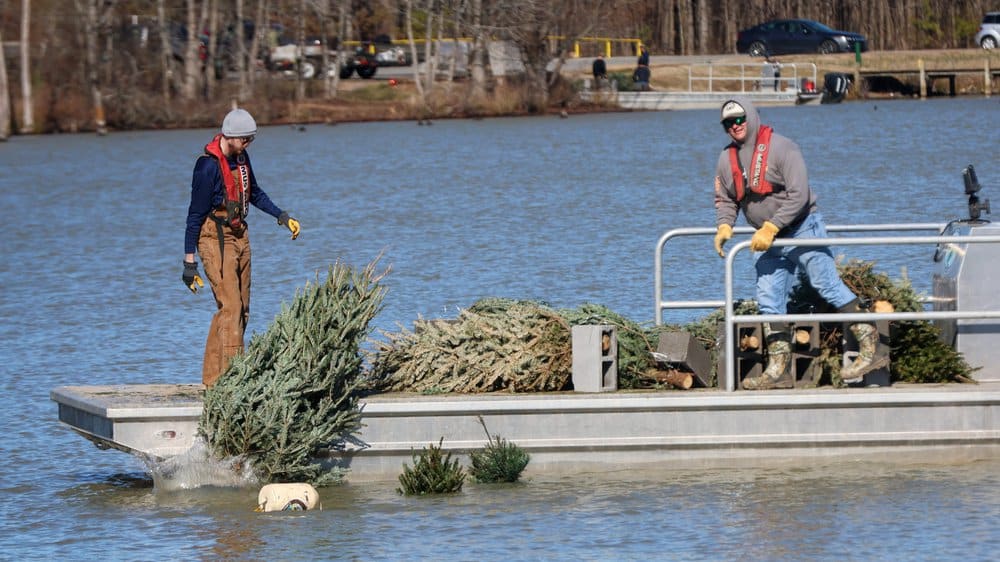
Pickthorne will continue to get more attention beyond Christmas tree habitat sites, Homan said.
“It’s one we’d like to try to renovate in the next five or 10 years,” he said. “Maybe put in some more fingers on it, try to break the wind up. Maybe help reduce some wave action, make it clearer. Put some lime in it, try to clear it up, because it’s pretty turbid. We think that kind of hinders the bass as far as feeding.”
As the habitat barges were both out delivering the bound trees to the sites, he added, ”Today it’s pretty dingy.”
The Brinkley office partners with other agencies such as Arkansas State Parks on similar habitat projects, he noted.
“Mississippi River State Park usually has about 50 trees dropped off,” Homan said. “We try to put them out at either Bear Creek Lake or at Storm Creek Lake, where we’ve put them the last couple of years.”
Anglers don’t have to wait for the AGFC biologists to create a habitat site. Trees are still waiting for the do-it-yourselfers. Find a site here and grab what you want. Pick up a concrete block per two trees, stick the trunks into the open holes of the block, tie them with paracord, and toss them in your favorite honey hole to attract some fish.
Recent News
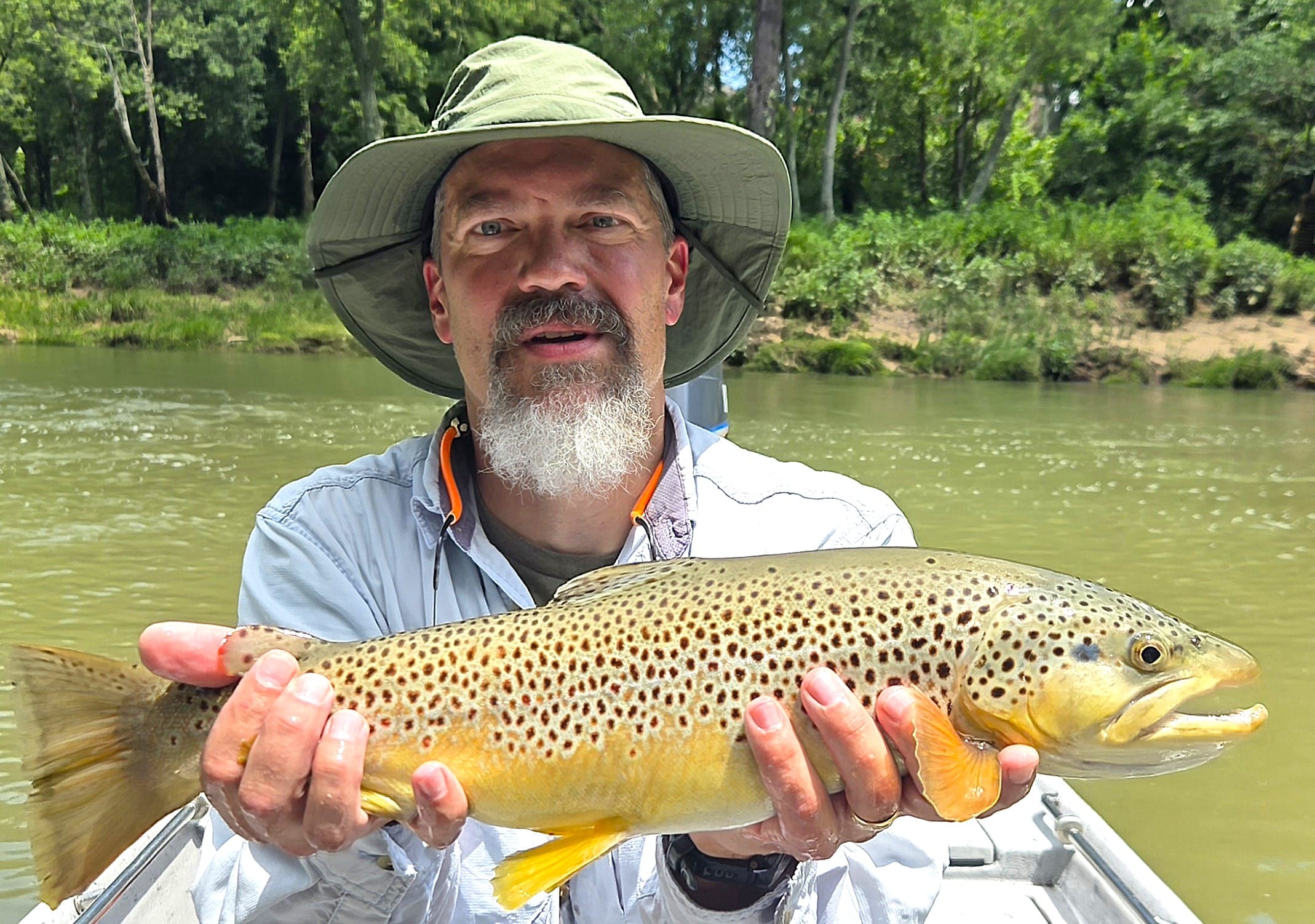
Arkansas Wildlife Weekly Fishing Report
Jul. 3, 2025
Subscribe to Our Weekly Newsletter E-mails
Don’t miss another issue. Sign up now to receive the AGFC Wildlife Weekly Newsletter in your mailbox every Wednesday afternoon (Waterfowl Reports are published weekly during waterfowl season and periodically outside the season). Fishing Reports arrive on Thursdays. Fill in the following fields and hit submit. Thanks, and welcome!

